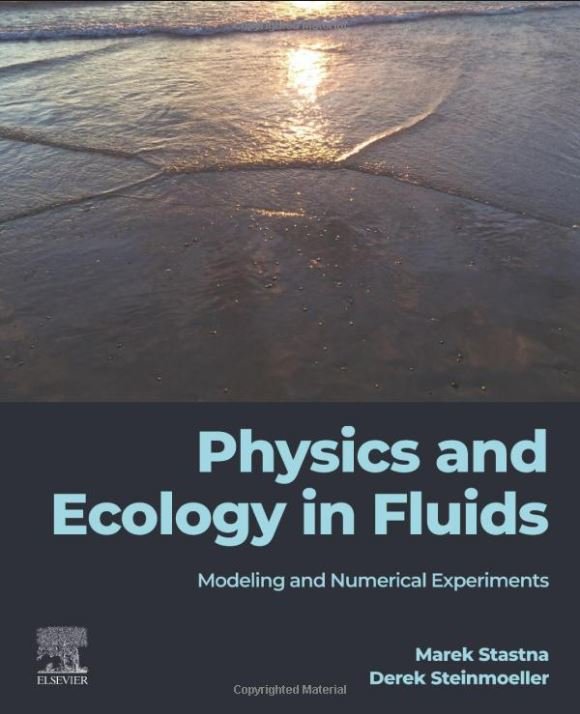Physics and Ecology in Fluids: Modeling and Numerical Experiments
Congratulations to our Senior Software Developer Derek Steinmoeller for publishing his latest book! 'Physics and Ecology in Fluids: Modeling and Numerical Experiments' was written by Dr. Marek Stastna, Professor, Dept. of Applied Math, University of Waterloo and his former graduate student Dr. Derek Steinmoeller, Scientist/Senior Software Developer at Aquanty Inc.
The book was written to help fill a perceived gap in the current understanding of the interactions between the motion of fluids in natural bodies of water and the population dynamics of the living organisms that reside therein. The book takes a novel approach to teaching by using the reader's laptop to run open-source simulation codes in a kind of 'virtual laboratory' to explore the movement and evolution of fluid flows and the organisms that are represented as tracers of the flow.
This approach may be juxtaposed against the more traditional style that focuses on the well-known, and often esoteric, solutions available from traditional pencil-and-paper applied mathematics techniques. This book helps graduate students deepen their understanding of physics and ecology in natural waters, and bridges the disciplines of biology and physics to the world of numerical experimentation.
buy a copy of Physics and Ecology in Fluids: Modeling and Numerical Experiments
Stastna, M., & Steinmoeller, D. (2023). Physics and ecology in fluids: Modeling and numerical experiments. Elsevier - Health Sciences Division.
Watch the authors' home page for simulation codes and updates!
Description:
Physics and Ecology in Fluids: Modeling and Numerical Experiments develops mathematical and numerical modeling methodologies for coupled biological-hydrodynamic problems with a focus on process studies. The modeling is presented in a way that discusses mathematical background but does not depend on a large body of mathematical pre-requisites or experience. Models are built up from simple, to complex. This includes discussion of approximations and shortcuts commonly made by large computational models for natural bodies of water. Computational approaches are presented using conceptual explanations and pseudo-code along with well-documented, open-source code. Over a dozen codes that run locally on the reader's laptop provide hands on experience with various aspects of the modeling process and its scientific results. One large-scale code for basin scale modeling based on the Discontinuous Galerkin methodology is presented, along with a self-contained discussion of theoretical background and implementation details.
Physics and Ecology in Fluids is written for graduate students, academic researchers and government scientists. Professors can use the book as a stand-alone resource for a one term graduate course, or to supplement teaching of their own graduate courses. All readers may also use the book as background/user's guide for the software included with the book.
Presents accessible codes along with clear explanations of the mathematical modeling process that leads up to the code
Provides a consistent development of the mathematical models for hydrodynamic and biological modeling, which are rarely covered together
Includes an informal, discussion-style tone throughout, but with serious applied mathematics content, allowing a level of detail relevant for multiple reader types

